Source, by: Flags of the World




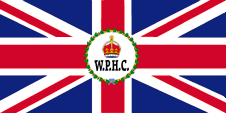
1877–1926,
Flag of Western Pacific High Commissioner,
ratio = 1:2,
Source, by: Flags of the World



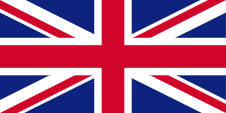
1889–1949,
Union Flag → quasi National flag,
Flag of United Kingdom,
ratio = 1:2,
Source, by: Flags of the World





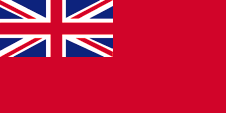
1889–1949,
Merchant flag,
ratio = 1:2,
Source, by: Flags of all Nations





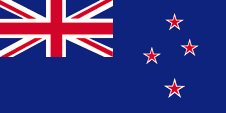
1949–2008, New Zealand,
National and state flag, and naval jack,
ratio = 1:2,
Source, by: Flags of the World





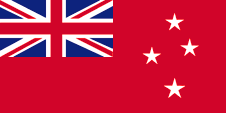
1949–2008, New Zealand,
Merchant flag,
ratio = 1:2,
Source, by: Flags of the World



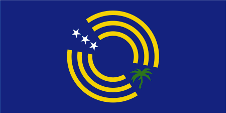
1989–2008,
unofficial national flag,
ratio = 1:2,
Source, by: Flags of the World




The current flag of Tokelau was adopted on 29th of May in 2008 and was officially hoisted for the first time on 22nd of October in 2009. It shows a blue base bunting with a large stylized deep yellow Polynesian canoe on it. There are four white five-pointed stars in the upper corner or on the mast. The sailboat is a reference to its inhabitants. The four stars are taken from the New Zealand flag and are a reminder of the ties to the motherland. The colours of the flag seem to be defined, at least there is a statement that the blue of the flag corresponds to the blue in the flag of New Zealand. This would mean that the British Ministry of Defense colour system would be valid. This purports for blue = Pantone 280 c and for deep yellow = Pantone 116 c. The blue represents the sky and the Pacific Ocean in which the archipelago is located. The flag used before 29th of May in 2008 was unofficial. It showed a plain blue base bunting, covered with a triple concentric yellow ring, which was interrupted at one point by three stars and at the opposite point by a green palm tree. The three stars represented the three islands that make up Tokelau: Atafu, Nukunono and Fakaofo. The design of the flag was intended to be reminiscent of an atoll. When the islands became a British protectorate in 1877, they were placed under the jurisdiction of the High Commissioner for the Western Pacific, who was responsible for the still unorganized British colonial administration in the Pacific. So there was no official British administration and therefore no flags from British authorities. On 22nd of June in 1889, the British flag was officially raised on Tokelau. When the islands were joined to the Gilbert and Ellice Islands for administration in 1916, there were no administrative flags there either (until 1937), only a British Resident Commissioner. Only the British flag (Union Flag) has been flown here since 1892. From 1926, the administration was subordinated to the Administrator for Western Samoa in New Zealand and in 1949 Tokelau was placed under the administration of New Zealand, which meant that New Zealand's flags had been to use, as there was no official flag of its own until 2008, the year the current flag was introduced.
Source: Flags of the World,
Wikipedia (D),
Volker Preuß

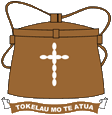
since 2008,
Badge of Tokelau,
Source, by: Wikipedia (EN)
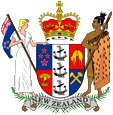
to 2008,
Coat of arms of New Zealand,
Source, by: Corel Draw 4

The today's coat of arms was – like the flag – adopted on 29th of May in 2008. It shows a Tuluma, a traditional Tokelau carved wooden "fishing tackle box" used by local fishermen. A white, Christian cross appears in the middle and the inscription below shows the country's motto: "Tokelau mo te Atua" → "Tokelau for God".
Source: Wikipedia (EN)

Location:
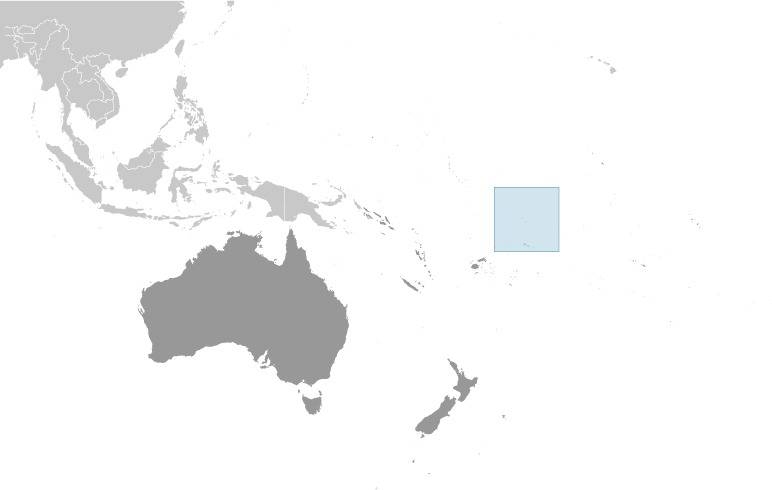
Source: CIA World Factbook
Map of the country:

Source: CIA World Factbook

Area: 4,6 square miles, containing the islands of:
• Atafu (Duke of York Island)
• Nukunonu (Duke of Clarence Island)
• Fakaofo (Bowditch Island)
Inhabitants: 1.499 (2016)
Religions: ca. 50 % Roman Catholic, ca. 50 % Protestant
Density of Population: 324 inh./sq.mi.
Capital: The administrative headquarters changes annually between the three islands
official Languages: Tokelauan, English
Currency: 1 New Zealand Dollar (NZD, NZ$) = 100 Cents
Time Zone: GMT + 13 h
Source:
Wikipedia (D)

17th century · settlement by Polynesians
21st of June in 1765 · discovery of Atafu Island by the British seafarer John Byron, he named it Duke of York Island
12th of June in 1791 · discovery of Nukunonu Island by the British seafarer Edward Edwards, he named it Duke of Clarence Island
14th of February in 1839 · the US-American seafarer Stephen R. Crocker visits the island of Fakaofo and names it DeWolf Island after the owners of the ship
28th of January in 1841 · an US-american research expedition debarks on Fakaofo Island, they named it Bowditch Island
12th of February in 1863 · Peruvian slave hunters kidnap half of Fakaofo's population
In the afteryears the islands became summarized under the geographic term Union Islands, but inclusive further islands, so Olohega (Swains Island or even Gente Hermosa or Olosenga), Pukapuka (Danger Island), Nassau (Lydra Island) and Suwarrow Island. The Union Islands were already called Tokelau Islands (by use of the indigenous term) at the end of the 19th century. The USA claimed at that point in time some of the islands and some had been even occupied by the USA to ply guano mining.
1877 · United Kingdom declares the islands a protectorate and part of the British Western Pacific Territories
1889 · official appropriation by United Kingdom
1893 · the administration of the Union Islands becomes handed over to the British protectorate of the Gilbert and Ellice Islands (today Kiribati and Tuvalu)
29th of February in 1916 · the Union Islands become affiliated to the Gilbert and Ellice Islands
1926 · the islands become separated from the Gilbert and Ellice Islands and subordinated under the Governor General of New Zealand, Olohega Island (Swains Island) becomes ceded to the USA
11th of February in 1926 · the Union Islands become separated from the British Western Pacific Territories and subordinated under the High Commissioner for Western Samoa
1946 · the Union Islands became officially renamed in Tokelau Islands
1st of January in 1949 · the Tokelau Islands become affiliated to New Zealand
9th of December in 1976 · the Tokelau Islands become officially renamed in Tokelau
2nd of December in 1980 · Tokehega Treaty between New Zealand and the USA, the USA recognize Tokelau, Olohega Island (Swains Island) becomes once more allocated to the USA
15th of February 2006 · a referendum for independence fails
2006 · a draft for a constitution designates the by the USA administered Olohega Island (Swains Island) as a component of the country
October 2007 · a referendum for independence fails
Source:
World Statesmen,
Wikipedia (DE),
Volker Preuß

The archipelago was initially called "Union Islands" until they were renamed in Tokelau Islands in 1946. In 1976 the islands were officially renamed in Tokelau. The name "Tokelau" means "northwest wind" or "leaf tip" in the local language.
Source: Wikipedia (DE)


![]()

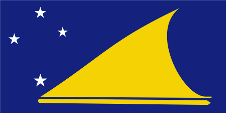


















![]()
